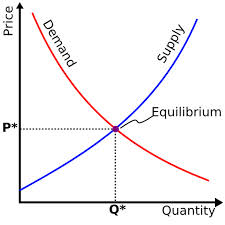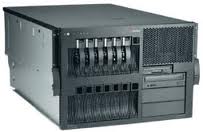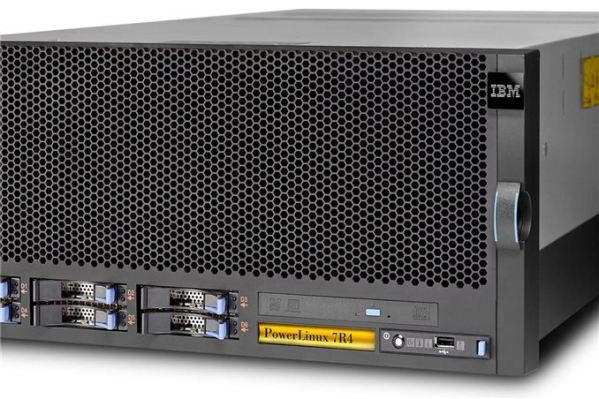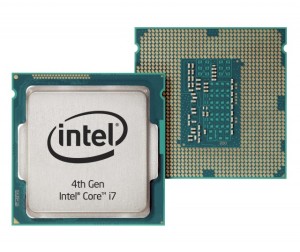Intel’s sales and marketing senior executive Tom Kilroy said at Computex last week “The two-in-one concept is really going to be the new wave”, citing computers such as the Lenovo Yoga, which can be used as both a laptop, a tablet and in ‘tent’ mode with a viewing screen that stands up on its own, he said. “The days of carrying around a smartphone, a tablet, and a notebook are numbered – the discrete tablet as we know it will go by the wayside and the 2-in-1 will be the future. If you’re doing content creation it just doesn’t happen on the phone.”
We’re Heading in the Right Direction
I cannot agree more that the endpoint for all the phone, tablet, laptop/notebook convergence talk is fewer devices for most people. For one reason, cost alone prohibits many from affording three devices at a roughly $600 unsubsidized cost per device. The phone is most likely to stand alone because it is the most pocket-portable, and can do it all albeit in a tiny form factor. That leaves the battle between the tablet and laptop as the device most likely to morph dramatically this decade.
Many will settle on a converged laptop-tablet (laptab) that combines the media consumption strengths of the tablet with the data and media production strengths of the laptop/notebook. Such a laptab could do the jobs of both a laptop and a tablet with few if any compromises. Done right, the laptab will be the converged non-phone device.
Intel’s Haswell and Baytrail announcements on June 3rd set the stage for that company to rapidly become a much bigger player in the smartphone and laptop business, as well as setting the stage for Ultrabook laptops with convertible features. What’s changed with this latest generation of technology is much improved performance-per-watt, idle power, and battery life.
The mainstream laptop is now in the same ballpark as tablets with keyboards in baseline mobility and weight. Convertible laptops sans keyboards give up little to dedicated tablets in hardware. Tablets and laptops now both have adequate screen resolution, processor speed, memory and storage, and battery life for media consumption — the tablet’s tour de force.
However, while the industry is now headed in the direction of laptab convergence, I don’t think we are yet on course. As the old New England adage goes, “If you don’t know where you’re going, any road will get you there.”
Let’s look more deeply at what a converged two-in-one should look like. We’d hate for the promise of convergence to be a mirage.
A Two-in-One Should Be Just That
Our qualitative market research shows consumers really do want one mobile device that can do the jobs now performed separately by laptops and tablets. As usual, the devil is in the details.
To the users in our research panels, converged really does mean “coming together” in hardware and software including apps. That’s not the public industry directional focus we’ve seen.
On laptops, users want to “run tablet apps on a productivity OS (like Windows or OS X). On smartphones and tablets, users want to “run productivity apps I am familiar with, and have access to my home and work data.” Queried further, users tell us they want a merged hardware feature-set combining a tablet and laptop together with the ability to run their tablet apps on the laptop. (You gotta love non-technology users for wanting technology miracles. It’s what drives innovation.)
A converged laptab hardware set would include:
- Processor, memory, storage, touch screen
- All-day (and probably into the night) battery life
- Keyboard, preferably removable for weight reasons
- Tablet sensors: GPS, accelerometer, 1080p video/still camera
- Radios: Bluetooth, WiFi, optional 3G/LTE cellular. NFC when retailers enables the NFC eCommerce market.
The heavy lift from these pesky consumers is in the software stack. They want to run tablet apps (e.g., Angry Birds) on a full operating system. For example, iOS apps on an OS X MacBook.
Importantly, they do not want to buy a second copy of an app (e.g., $4.99 Angry Birds for OS X) on a full operating system. “One app with one set of data” is what we heard, along with complaints about the intricacies of syncing. Now, we suggested to Apple execs five years ago this summer that running iOS apps on OS X was a good idea. They replied, “Yeah, we’ve heard that.” But not done anything about it.
So, consider consumers with jobs who need to stay compatible with applications and files they use at work. Think Microsoft Office. These folks can’t give up the laptop and its office-productivity OS for a consumption-oriented tablet in an either-or decision. Let’s call this the business laptab market.
Conversely, tablets are go-to devices for video watchers, Internet surfers, email and readers but few book writers or budget spreadsheet accountants. It’s the consume(r) market.
How the tech industry responds to the above specs for the two divergent markets will dictate the course and duration of converged laptab demand.
There are two positive signs we’ve noticed recently, both involving Intel. First, the company acquired ST-Ericsson’s global navigation satellite system (GNSS) business. That will bring GPS capabilities to Intel’s communications chip business, and hence to Intel mobile products like tablets and laptops. Second, the Silvermont architecture that includes the Baytrail tablet chip supports virtualization, so hypothetically Android could run along side Windows or iOS along side OS X. Just a small matter of programming and licensing.
On the negative side, a number of products have been announced with dual-boot capabilities, especially Android and Windows. This plays to the “laptop converts to tablet” form of convertibles. However, our research says dual-boot is not the destination.
To watch laptab convergence play out, keep an eye on the three OS players: Microsoft Windows, Apple’s iOS and OS X, and Google. We view Google as a wild card because it could rather easily merge Chrome OS and Android with Google apps (but has said that won’t happen over the next two years.) The hardware industry really cannot deliver the converged laptab described above without the active support of the OS players.
Laptab users may want to think through their long-term options. Browser-based apps, especially those using HTML5 and the cloud, are quite interchangeable. The trend is towards cross-OS applications. Apple’s iWork office apps will soon run on iOS, OS X, and Windows. Google Docs and Microsoft Office 365 are available in the cloud. Microsoft just delivered Office for iPhone.
Summary Observations
The direction of laptab convergence we’ve seen to date is headed in the right direction, but the finish line is not in sight.
Real consumers with experience in tablets and laptops see the need to bring all the sensor and media hardware in tablets to laptops; convertible laptops with removable keyboards do not go far enough into the desired experience to replace and substitute for tablets.
The convergence miracle is a combined tablet and notebook OS software and user apps. The hardware to do this is now close at hand. But the willingness of the industry to push the software, licensing, and marketing investment is not apparent.
Thus, widespread laptab substitution for tablets and laptops is not in the foreseeable future. The market, especially the business laptab market, will remain additive.
Follow @peterskastner on Twitter

Lenovo Ideapad Yoga convertible laptop
 “Gee, maybe my data-center computing model for the company needs a strategic re-think?” And while there’s a very active consulting business by the usual business-transformation consulting suspects, the no-cost answer is: yes, cloud computing is a valid model that most enterprises and applications should move to over time.
“Gee, maybe my data-center computing model for the company needs a strategic re-think?” And while there’s a very active consulting business by the usual business-transformation consulting suspects, the no-cost answer is: yes, cloud computing is a valid model that most enterprises and applications should move to over time.




